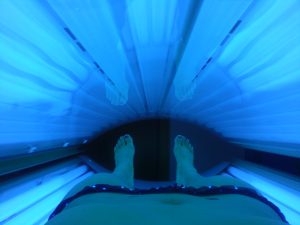By Chelsea Thornton (Staff Writer) – Email
 The City of Victoria recently decided to ban tanning beds for anyone under the age of 18, and the ban has awakened the classic Canadian debate: at what point does government interference in our day to day lives cross the line between responsible governance and full-fledged nannying?
The City of Victoria recently decided to ban tanning beds for anyone under the age of 18, and the ban has awakened the classic Canadian debate: at what point does government interference in our day to day lives cross the line between responsible governance and full-fledged nannying?
We are a well-educated, fully modern country, with access to a seemingly limitless pool of information about the risks and benefits we face before we jump in a tanning bed. Shouldn’t we be allowed to make decisions based on this information? As responsible adults, we should be allowed to make those decisions, which is why we can still suck on cigarettes, guzzle down alcohol, and bake in beds to our hearts content. The difficulty arises when we attempt to assess the ability of teenagers to make responsible decisions, especially because we tend to hold on to the habits formed during our teenage years for the rest of our lives.
As a society, we have already decided that teenagers are not responsible enough to choose whether or not to smoke or drink. Why should tanning, which might be comparably dangerous, not be subject to similar regulation? After all, the International Agency for Research on Cancer has determined that the risk of some forms of melanoma may increase by 75 per cent when the use of a tanning device starts before age 30. No matter how much the tanning industry promises that they are dedicated to helping their customers make informed tanning decisions, I know that little tidbit was never mentioned when I tanned as a teenager. And I don’t think the information would have kept me out of the tanning bed either.
With prom to consider, most of the girls in my grade were engaged in a tanning arms race; comparing maximum times spent in the beds, holding our arms side by side to determine who would claim the most glowing skin as backdrop for our dresses. In this competition lies another objection to teenage tanning: tanning is incredibly expensive, and the premium we place on tanning can emphasize the socioeconomic differences amongst teens. The argument that increasing the price of tanning would reduce teenage use of tanning beds is flawed, in that it would only reduce the use of tanning amongst less wealthy teens, and the divide between rich and poor would become literally visible.
Instead of wondering why we should or should not ban tanning for teenagers, we should ask why we should or should not allow tanning for teenagers. What benefit is there to tanning that can’t be obtained some other way? Replace base tans for sunny vacation spots with safe sun practices once you arrive. Relax in a regular bed at home instead of a tanning bed in a salon.
Get your vitamin D from a bottle, or better yet, from regular outdoor exercise. And if you really must tan, do it outside with friends, instead of alone in a coffin. It seems like the only benefit indoor tanning holds exclusive claim to is a winter tan. How badly do teenagers really need that?


